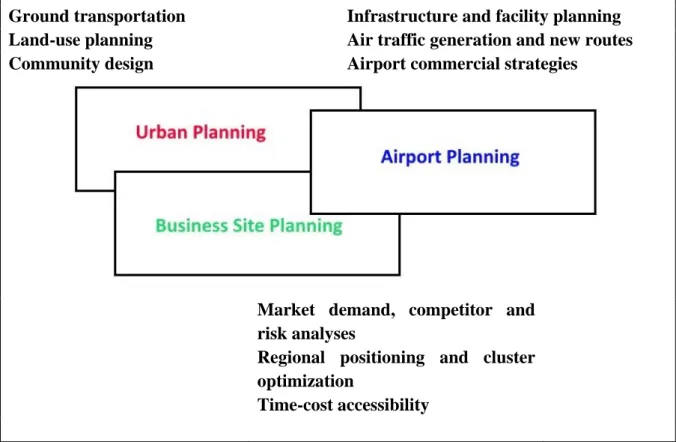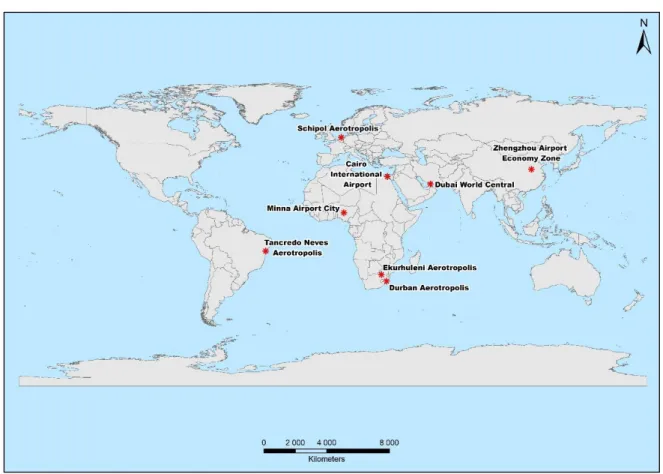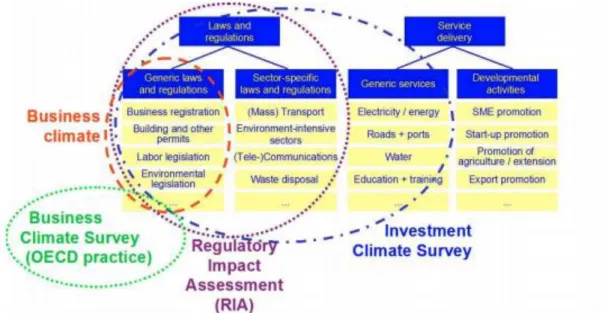This study explores the conceptualization and enactment of Regional Economic Development (RED) by analyzing the Durban Aerotropolis in KwaZulu-Natal, South Africa. The study thus contributed to the conceptual clarification of the regionally oriented processes of the Durban Aerotropolis.
Introduction
- Problem statement
- Aim and objectives
- Study questions
- Significance of the study
- Structure of the dissertation
To examine the conceptualization of the 'region' inherent in regional economic development through the Durban Aerotropolis. What is the conceptualization of the 'region' inherent in regional economic development through the Durban Aerotropolis.

Background on the Aerotropolis
Introduction
The ‘aerotropolis’ concept – the airport city
Aerotropolis is a rational system based on the time and cost required to access the airport. Overall, Kasarda (2000) explains that the development of the aerotropolis model was intended to replace location with accessibility as the organizing principle of commercial real estate.
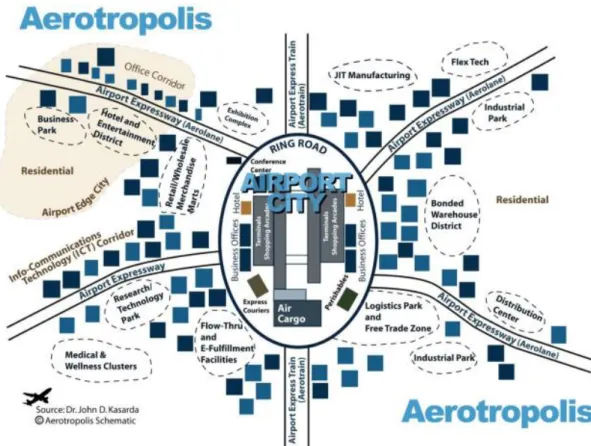
International aerotropolis experiences
- Schiphol (Airport City) Aerotropolis
- Memphis Aerotropolis
- Tancredo Neves Aerotropolis, Belo Horizonte
- Dubai World Central
- China
According to Cox (2009), stakeholder involvement and community collaboration played a key role in achieving the vision of Memphis Aerotropolis. Dubai has since been called the 'navel of the middle world', meaning it is well positioned for flights to anywhere in the world (Kasarda & Lindsay, 2011).
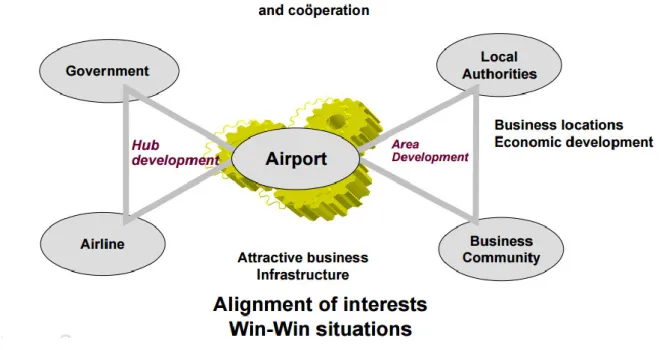
African aerotropolis experiences
- Cairo International Airport
- Minna Airport City, Nigeria
- The South African aerotropolis experience
In Nigeria, the idea of an aerotropolis was proposed by Princess Stella Oduah, who was the Minister of Aviation. Aerotropolis with its state-of-the-art infrastructure represents an important government investment in public–.
Conclusion
36 However, most of the examples are governance mechanisms that encourage joint efforts from both the public and private sectors. Regarding the understanding of the 'regions' inherent in the related RED of the different aerotropoli, for Schiphol, it is said that the reach of impact is the whole of the Netherlands, in that it is recognized as the engine of the country's economy.
Spatial theory as a basis for understanding regional economic development 37
Conceptualising ‘space’ and ‘space’
- The space of flows
- The concept of place (the space of places)
Having looked at the relationality of space and time, in the context of this study further attention needs to be paid to the 'space of flows' – defined by Castells as 'the material organization of time-sharing practices that operate through flows '. The information city/society consists of processes: processes that are characterized by the structural dominance of the space of flows.
Conceptualising ‘region’
- Geographical debate on ‘region’
44 researchers, international relations studies and economists, to build on the knowledge and understanding of the concept of the region. The relational view denies the territorial view of regions and instead argues that an adequate understanding of region can only come from a view of places as 'open, discontinuous, relational and internally diverse' (Allen, Massey & Cochrane.
A detour into the politics of scale
49 The problematic, polysemic and subjective nature of the concepts of space, place and region all testify to the social construction of the spatial scale. Scale thus depends on the tensions between structural forces and the practices of human agents (Marston, 2000).
Development linked to ideas of space, place & region
- Strategic spatial planning for spatial development
- Place-based development
- Regional development
The rationale for place-based policies is to improve the prospects and livelihoods of poor and disadvantaged households (Koster et al., 2016). The shortcomings that have been identified in country-based policies are mainly related to targeting and coverage. In essence, place-based investments in science parks foster agglomeration economies and innovation (Koster et al., 2016).
Conclusion
Regional development is more about the spatial dynamics of the regions as places to live, work and invest. The discussion of the fourth kind of relational space, place, centers on the literature dealing with the 'space of places' as proposed by Manuel Castells. The discussion in this chapter has a direct bearing on the conceptualisation of the region inherent in RED through the Durban Aerotropolis, and the exploration of these issues of space, place, region and scale will inform our ultimate understanding of this conceptualisation.
Regional economic development
Introduction
Conceptualisation of regional economic development
- What is regional economic development?
According to Wood and Valler (2009), delimiting the area of regional economic development is problematic, as it is very difficult to define any obvious boundaries around the related literature. A final very relevant point made by McGahey (2008:9) is that “approaches to regional economic development, and particularly cluster approaches, concentrate on economic growth, [with] little attention to inclusive growth or social equity within a region as part of economic development". Scott and Stoper (2007) note that “the role of cities and regions (also called city-regions) as drivers of economic growth and prosperity – in both developed and developing countries – has been increasingly emphasized in the economic development literature.
The enactment of regional economic development
- Agglomeration and clustering of firms
According to Johansson and Quigley (2004), the types of economic relationships in urban space, such as clusters, highlight the importance of agglomeration. According to Fujita and Krugman (2004), the focal point of the new economic geography is the formation of a large variety of economic agglomerations in geographical space (Fujita & Krugman, 2004; Bosker, 2007). According to Zhou (2010), entrepreneurship is more likely to influence the process that leads to knowledge being transformed into innovative products, as opposed to imitative products (Zhou, 2010).
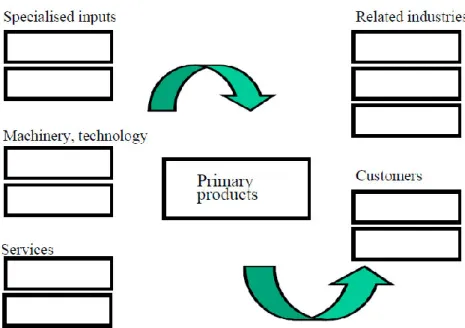
Regional governance
Utilization of regional resources requires analysis of the region's competitive advantage, strengthening of competencies, involvement of key intermediaries and investment of local capital (Barnes. & Foster, 2012). It is also noted the importance of the agenda stating the goals and purpose of the effort. The actor groups to be involved must be clearly established, and the group must have the ability to secure resources from within and outside the region.
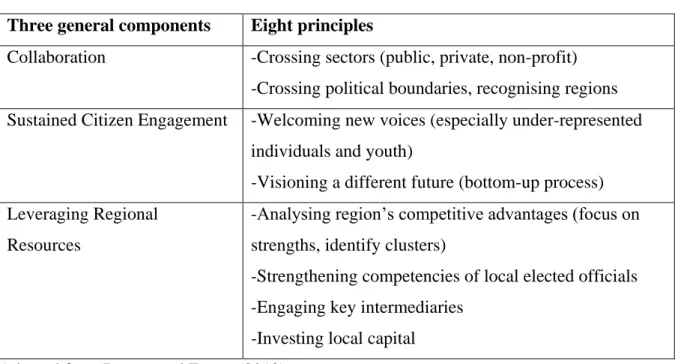
Regional marketing
- Business climate
- Image and identity
- Infrastructure
- Incentives
- Capacity building and skills
This is significant in light of the regional marketing context within which this discussion takes place. According to the United Nations (2011), improving national skills sets is by far one of the most important policy objectives for both developed and developing countries. To conclude, some of the most important points about managing the region that RED affects are summarized in the next section.

Conclusion
Coordinated investments in regional marketing relevant to this study include competitive advantages such as business environment, image and identity, infrastructure, capacity building, and development of skills and incentives. Infrastructure stands out as one of the key determinants of attracting foreign investment, and regions with good physical infrastructure are those most likely to attract foreign direct investment. One problem is that RED requires coordinated efforts from multiple stakeholders, but there is no definitive answer on how these stakeholders work together, as discussed in the governance chapter.
Research methodology
- Introduction
- Research location
- Research design
- Research approach
- Research paradigm
- Data sources
- Secondary data
- Primary data
- Population and sample
- Sampling method and approach
- Data collection tool
- Data analysis
- Knowledge trustworthiness and credibility
- Ethics
- Conclusion
Given the nature of the research purpose and the focus within the social constructivist approach, this was assessed as the best methodological framework for the study. The knowledge gained from the findings of the study needs to be validated, and this process is discussed in the next section. The analysis then led to the interpretation of the study findings, which are presented in the following chapters.
Conceptualisation of the ‘region’ inherent in RED as exemplified in the
- Introduction
- Notions of ‘region’ associated with the Durban Aerotropolis
- Conceptualisations of the function of the Durban Aerotropolis
- Conceptualisations of the form of the Durban Aerotropolis
- Conceptualisations of scale of the Durban Aerotropolis
- Purpose of function-form-scale in construction of the ‘region’ in RED
- Findings Summary
- Conclusion
In this context, stakeholders speak about the purpose of the Durban Aerotropolis as a space for industrial activities. In this way of thinking, the Durban Aerotropolis appears as one of the few aerotropolises in the world to use one. The form, function and scale of the Durban Aerotropolis region speaks to several species.
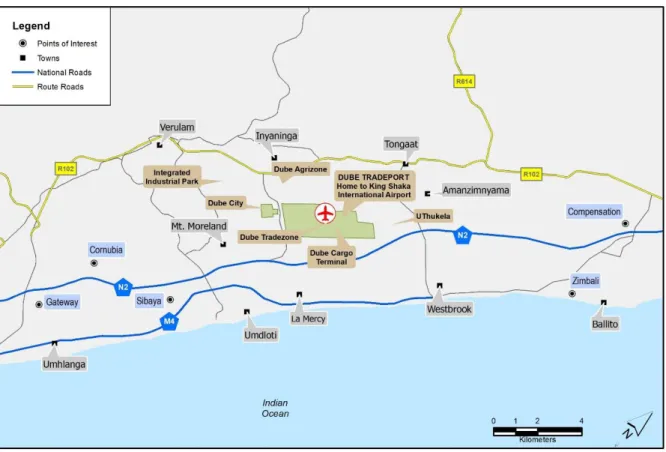
Collaborative and cooperative governance mechanisms in Durban
Introduction
Stakeholders and partners of the Durban Aerotropolis
- Public sector stakeholders
- Private sector stakeholders
- State-owned agencies
It was identified as one of the four crucial programmatic hub interventions of the department and the province (Aerotropolis, Maritime, Tourism and Industrial Economic) (EDTEA, 2015). THPD is also part of the steering committee where many plans are made regarding the aerotropolis project. It was also their duty to align their country with the broader plans of the Durban Aerotropolis.
The strategic thinking behind the vision of the Durban Aerotropolis
The decision to then initiate the project of relocating the airport was influenced in 2006 so that the province and the city could be ready for the World Cup in 2010. The vision of Durban Aerotropolis With regard to the vision of Durban Aerotropolis, it was clear that the stakeholders were aiming for to build a brand new city centered around an airport. I think everyone understands that we have an opportunity to also model what the future development of the country, the province first and then the country.
Beyond the vision: Stakeholder engagement in the Durban Aerotropolis
- The importance of stakeholder engagement
- Formal structures of stakeholder engagement
- Intergovernmental collaboration
The stakeholders discussed in Section 7-2 are part of the Durban Aerotropolis Steering Committee, convened by the KZN EDTEA. The Durban Aerotropolis Steering Committee oversees and supports Dube TradePort Corporation's development role in the aerotropolis. Durban Aerotropolis has four working groups, each focusing on different aspects of the project.
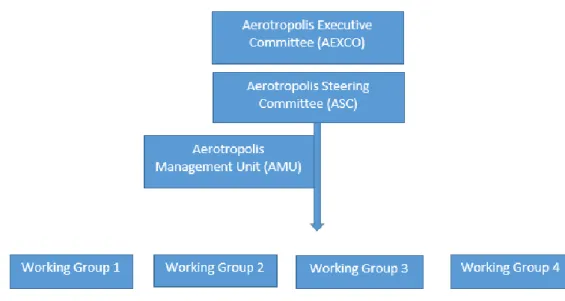
Findings summary
The Durban Aerotropolis also has mechanisms, platforms and avenues through which all stakeholders involved in the project come together. These platforms take the form of strategy sessions that led to the vision for the project and reflections on the vision of the Durban Aerotropolis. The Aerotropolis Executive Committee provides strategic support and direction in the development of the Durban Aerotropolis.
Conclusion
143 autonomous from each other, yet structurally coupled due to their interdependence, and this has been the case with regard to the governance dynamics of the Durban Aerotropolis project. There is also a metagovernance agent in the form of the Aerotropolis Management Unit, which has taken on the role of coordinating the various actions of the working groups across space, time and domains (Chapple & Montero, 2016). The governance dynamics evident in the Durban Aerotropolis project attest to the presence of social capital, which is essential in complex projects such as this.
Agglomeration and clustering in the Durban Aerotropolis as enactment of
Introduction
These are some of the ways in which the growth of the Durban Aerotropolis can be achieved. The need to align national, provincial and city marketing strategies for the benefit of the Durban Aerotropolis. The comments include their general thoughts on the business climate in the Durban Aerotropolis and their perceptions.
The importance of diversity among companies in the Durban Aerotropolis
Managing the evolution of the Durban Aerotropolis as an assemblage of economic
What will affect the longevity of the Durban Aerotropolis as an agglomeration
Externalities associated with clustering of businesses in the Durban Aerotropolis 152
- Value chains of the Durban Aerotropolis
- Entrepreneurship and Innovation in companies in the Durban Aerotropolis
- Experiences of the businesses in the Durban Aerotropolis
Findings summary
Conclusion
Coordinated investment in Durban Aerotropolis for regional marketing as an
- Introduction
- Barriers to effective regional marketing of the Durban Aerotropolis
- Lack of a coordinated regional marketing team for the Durban Aerotropolis . 171
- Working Group 1
- TKZN
- TIKZN
- Dube TradePort
- ACSA
- What gives the Durban Aerotropolis the competitive edge?
- Investments and initiatives in infrastructure development for the Durban
- Investment and efforts in skills development and capacity building for the
- Investments in incentives for the Durban Aerotropolis
- Voices of business in regard to coordinated investments for regional marketing
- Business climate
- Image and identity
- Access to basic services and infrastructure
- Availability of skilled labour
- Incentives
- Findings summary
- Conclusion
Essentially, these are the various entities and stakeholder groups and organizations that play a role in the marketing of the Durban Aerotropolis. The committee is responsible for Task Force 1 of the Durban Aerotropolis Project o for the development and marketing of the Durban Aerotropolis brand. The next section discusses the investment efforts of Durban Aerotropolis stakeholders in skills development and capacity building.
Conclusion
The conceptualisation of the ‘region’ inherent in RED through the Durban
Understanding the governance mechanisms for RED through the Durban
Agglomeration and clustering of businesses as a feature of RED seen in their
Exploration of regional marketing as a characteristic of RED through the
What do the findings tell us about the conceptualisation and enactment of RED? 199
- Enactment of RED
Contribution of the study
- Theoretical contribution
- Practical contribution
Recommendations of the study
- Limitations and recommendations for future research

